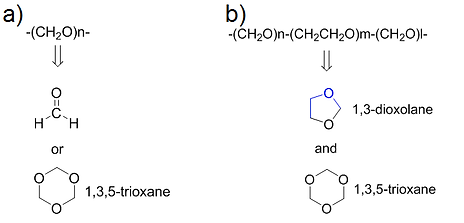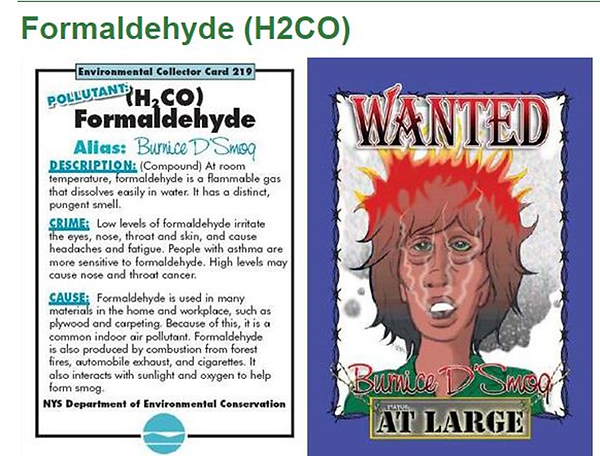
Polyoxymethylene (POM), also known to many by acetal, polyacetal and polyformaldehyde, is an engineering thermoplastic with high degree of crystallinity. It is mainly used to mold parts requiring precision, high stiffness, high impact and low friction. POM is synthesized from anhydrous formaldehyde or trioxnae, converted from formaldehyde, to produce the homopolymer, while the copolymer is produced form trioxane and 1,3-dioxolane. In the latter, 1-3% of the mehtylene oxide groups are replaced by ethylene oxide, resulting in lower melting point and mechanical properties. On the other hand, ethylene oxide lowers the toxic emission of formaldehyde during compounding and injection molding by stabilizing the elimination intermediate caused by heating and shearing.
Fig. 1: synthesis of a) homopolymer POM b) copolymer POM
Fig. 2: degradation of homo-POM (left) and copo-POM (right)
Due to the toxicity and high prices of the homopolymer, many companies replaced it with the copolymer version. However, the homopolymer couldn’t be replaced, by the copolymer, in the cases where high impact resistance is required. Consequently, two decades ago the market of impact modified copolymer (IM-POM) was established.
In this market, BASF (Ultraform) and Celanese (Hostaform), are the two dominant players. Many compounding companies have tried to get into the market with no success due to the delicate nature and narrow processing window of acetal polymer during compounding in addition to limited sources and knowledge of the impact modifiers suitable to acetal. Recently, we succeeded in cracking this family of compounds by using specific compounding parameters, screw configuration and impact modifiers. The result is an array of impact modified compounds that compete with the market leading products.
Fig. 3: the relation between tensile strength and impact resistance. The higher the impact the lower the tensile strength, due to the use of impact modifiers.
Moreover, we have gone one step further to developed a new sub-family of low emission (VDA 275), impact modified acetal compounds. This new family relies on the percentage of impact modifier used combined with the type of base POM resin used in the formula. Importantly, a special attention should be given to gentle compounding parameters to lower the decomposition and emission of the final compound.
Fig. 4: Parameters affecting the emission: lower MFI, increase percentage of IM in the formula and the quality of raw material.
Going one step further, we have developed a universal master-batch (MB) based on concentrated impact modifier acetal compound which can be added to a virgin acetal resin on a single screw molding machine, using regular MB feeding system, to achieve a desired impact modification. Beside the economical value of this approach, it has another positive effect on the mechanical properties of the product, as the virgin POM resin used for dilution will not undergo extrusion and degradation which known to lower the mechanical properties in the ready to use material.
Fig. 5: Using the impact modifier MB concept in two viscosities, medium (up) and high (bottom), for diluting a neat POM on single screw injection molding machine to achieve higher impact.






